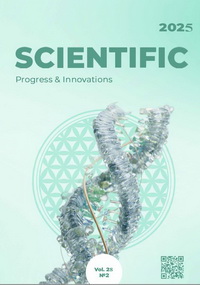Ефективність видів праймінгу на насіння зернових колосових культур
DOI:
https://doi.org/10.31210/spi2025.28.02.16Ключові слова:
схожість, ріст, розвиток, адаптація, пшениця озима, ячмінь ярий, овесАнотація
Мета огляду полягала у систематизації наукових знань про методи праймінгу насіння зернових колосових культур, проведенні бібліометричного аналізу публікаційної активності в цій галузі й обґрунтуванні необхідності розширення досліджень для забезпечення сталого розвитку сільського господарства. Зернові колосові культури відіграють ключову роль у світовому виробництві продовольства та відновленні ґрунтових ресурсів. Передпосівна технологія обробки цих культур є важливою як для забезпечення високого врожаю, так і для охорони довкілля та збереження біорізноманіття. Актуальність агроекологічних аспектів технологій передпосівної обробки зернових колосових культур на сьогодні надзвичайно висока з низки ключових причин. Праймінг насіння – це захід передпосівної обробки, який призводить до фізіологічного стану, що дозволяє насінню забезпечувати підвищену виживаність сіянців та ефективніше проростати. Існують різноманітні види праймінгу: гідропраймінг, галопраймінг, осмопраймінг, біопраймінг, гормонопраймінг, хіміопраймінг, термопраймінг, праймінг твердої матриці, нанопраймінг та фізичні методи. Дане питання не набуло достатнього розвитку та поширення, хоча є вагомим і доволі давнім способом обробки насіння. Існує незначна кількість наукової літератури з праймінгу насіння. Для кращого розуміння закономірностей, які спостерігалися в дослідженнях протягом останніх двадцяти чотири роки, було проведено бібліометричний аналіз за допомогою інформаційної бази даних ScienceDirect і порівняно його з подібним аналізом, проведеним іншими авторами за базою даних Science Citation Index Expanded (SCI-E). Результати досліджень свідчать, що наукові роботи з праймінгу насіння значно обмежені за обсягом, кількістю й якістю. Отже, вкрай необхідно збільшувати прогрес у наукових дослідженнях і сприяти співпраці, що потребує підтримки як фінансової, так і кращої координації між вченими з різним досвідом та поглядами.
Downloads
Опубліковано
Як цитувати
Номер
Розділ
Ліцензія
Авторське право (c) 2025 Scientific Progress & Innovations

Ця робота ліцензується відповідно до Creative Commons Attribution 4.0 International License.

 Creative Commons Attribution 4.0 International Licens
Creative Commons Attribution 4.0 International Licens